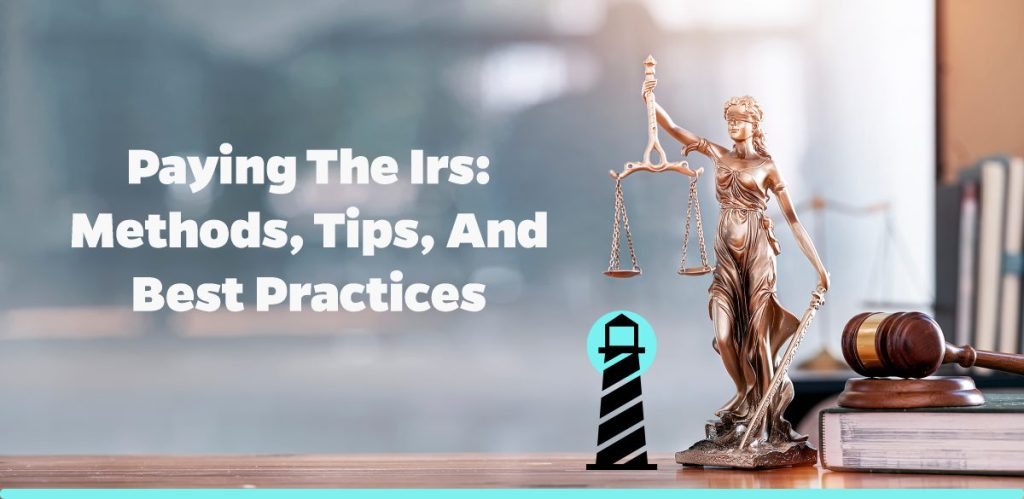Understanding IRS Payment Options
The Internal Revenue Service (IRS) equips taxpayers with numerous payment options to ease the burden of paying taxes. Whether you owe money due to a recent audit or a tax filing, understanding your payment options is crucial. According to Brightside Tax Relief LLC, a nationwide tax relief company, using the most efficient method can save you time, reduce stress, and potentially minimize penalties.
The Payment Methods to Pay IRS
Multiple payment modes are available to pay IRS dues – from electronic methods, credit or debit cards, to sending a check or money order.
1. IRS Direct Pay: This tool allows taxpayers to pay straight from a checking or savings account free of charge. Direct pay provides immediate payment confirmation and allows you to schedule payments up to 365 days in advance.
2. Credit or Debit Cards: The IRS partners with three payment processors to accept tax payments via a credit or debit card, both online or over the phone.
3. Electronic Federal Tax Payment System (EFTPS): Suitable for businesses and individual taxpayers who prefer scheduling payments in advance.
4. Check or Money Order: An old-fashioned but trustworthy method. Make sure to include your phone number, social security number (or employer identification number for businesses), and related tax form or notice number.
5. Wire Transfer: For taxpayers abroad, the IRS accepts same-day wire transfers.
Essential Tips to Pay IRS
Understanding how to navigate IRS payments can save you from financial stress and potential legal issues. Here are critical tips to remember:
- Pay on Time: Paying your taxes on time is the most straightforward way to avoid late-payment penalties and interest charges.
- Consider Short-Term Payment Extensions: The IRS provides an additional 60 to 120 days to pay in full for qualified individuals.
- Investigate Payment Plans: If you cannot pay at once, the IRS offers installment agreements that allow taxpayers to pay their debt over time.
- Remember Estimated Tax Payments: If you’re self-employed or have other income that isn’t subject to withholding, remember to make estimated tax payments throughout the year.
Best Practices When Dealing with the IRS
Aiming to comply with the IRS is more than just ensuring you pay your taxes. It’s about how you interact with this government institution. Following these best practices can lead to a smooth sailing tax journey:
- Always Reply to IRS Notices: Ignoring a notice from the IRS can result in additional charges, penalties, or interest.
- Maintain Accurate Records: File all tax documents, such as receipts, canceled checks, and records of expenses, to streamline the filing process.
- Review your Tax Return Carefully: Ensure there are no errors in your tax return before submission. Mistakes can cause unnecessary delays.
- Seek Professional Help: When in doubt, seek help from experienced professionals, like the team at Brightside Tax Relief LLC, familiar with IRS procedures.
Payment Options for Struggling Taxpayers
The IRS acknowledges that sometimes taxpayers may face financial hardships, making it challenging to meet tax obligations. To ease this burden, they provide several programs:
- Offer in Compromise: This allows taxpayers to settle their tax debt for less than the total amount owed.
- Temporary Delay: The IRS may temporarily delay collection and classify your account as currently not collectible if you’re facing significant financial hardship.
- Installment Agreement: For taxpayers unable to pay their tax debt immediately, the IRS allows monthly payments through an installment agreement.
For a comprehensive understanding of these methods, you can visit the IRS website.
Navigating the complexities of tax payments can be overwhelming. However, understanding these procedures, coupled with expert help from companies like Brightside Tax Relief LLC, can significantly simplify the process. Adopting these best practices and tips can help you better manage and potentially alleviate any tax-related stress. Ultimately, knowing when and how to pay your taxes appropriately not only indicates your adherence to the law but also safeguards your financial health in the long run.




